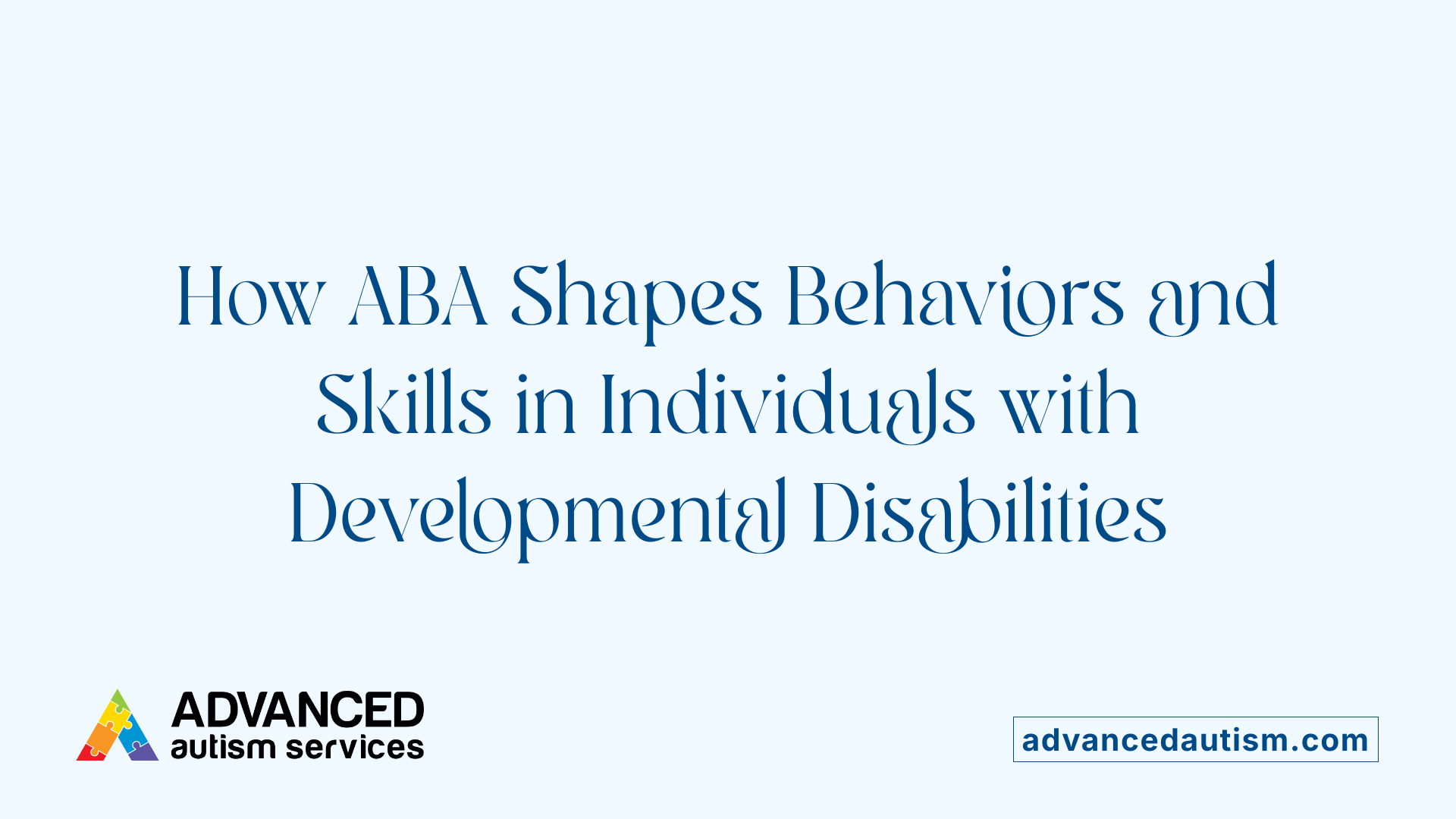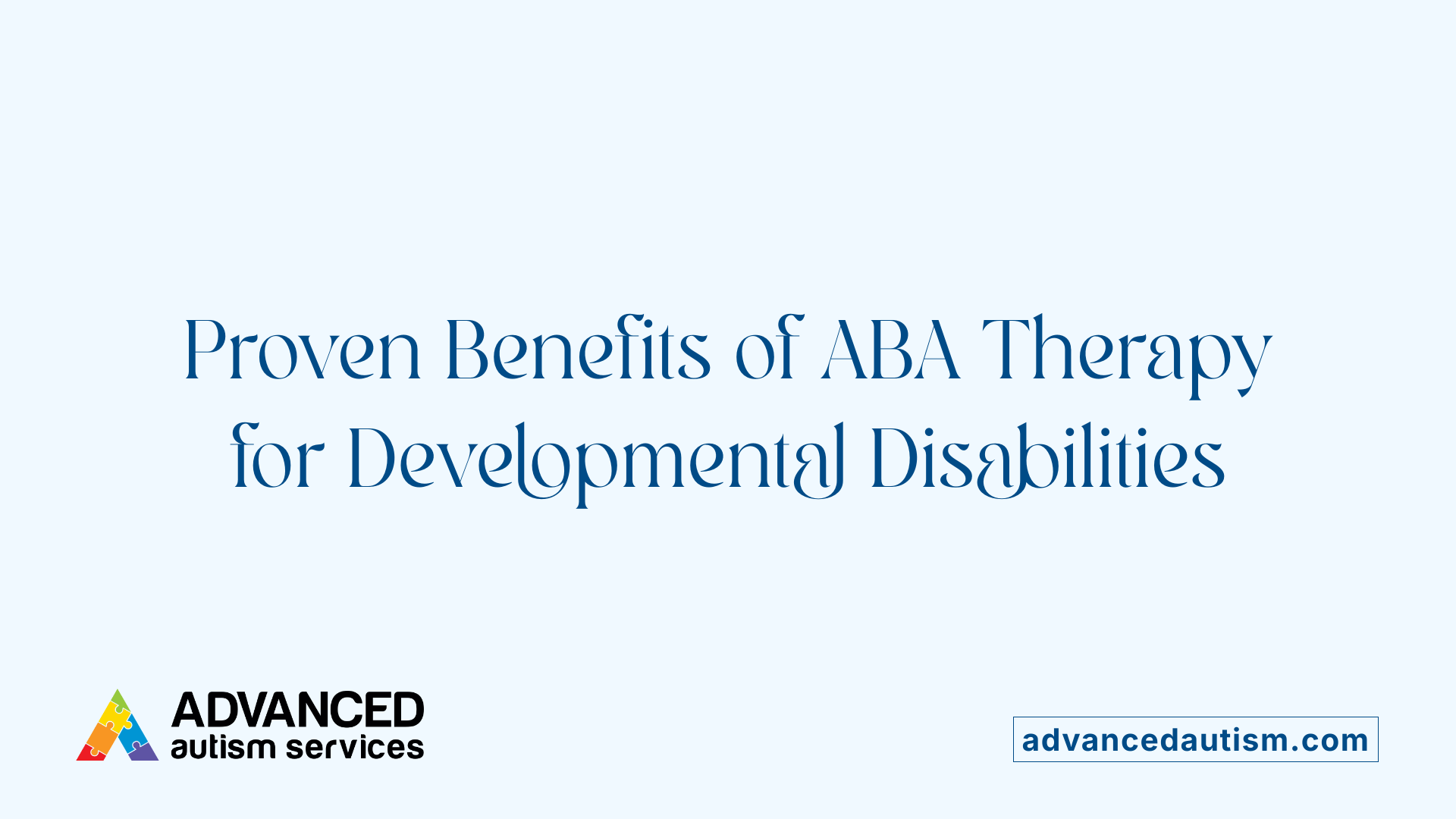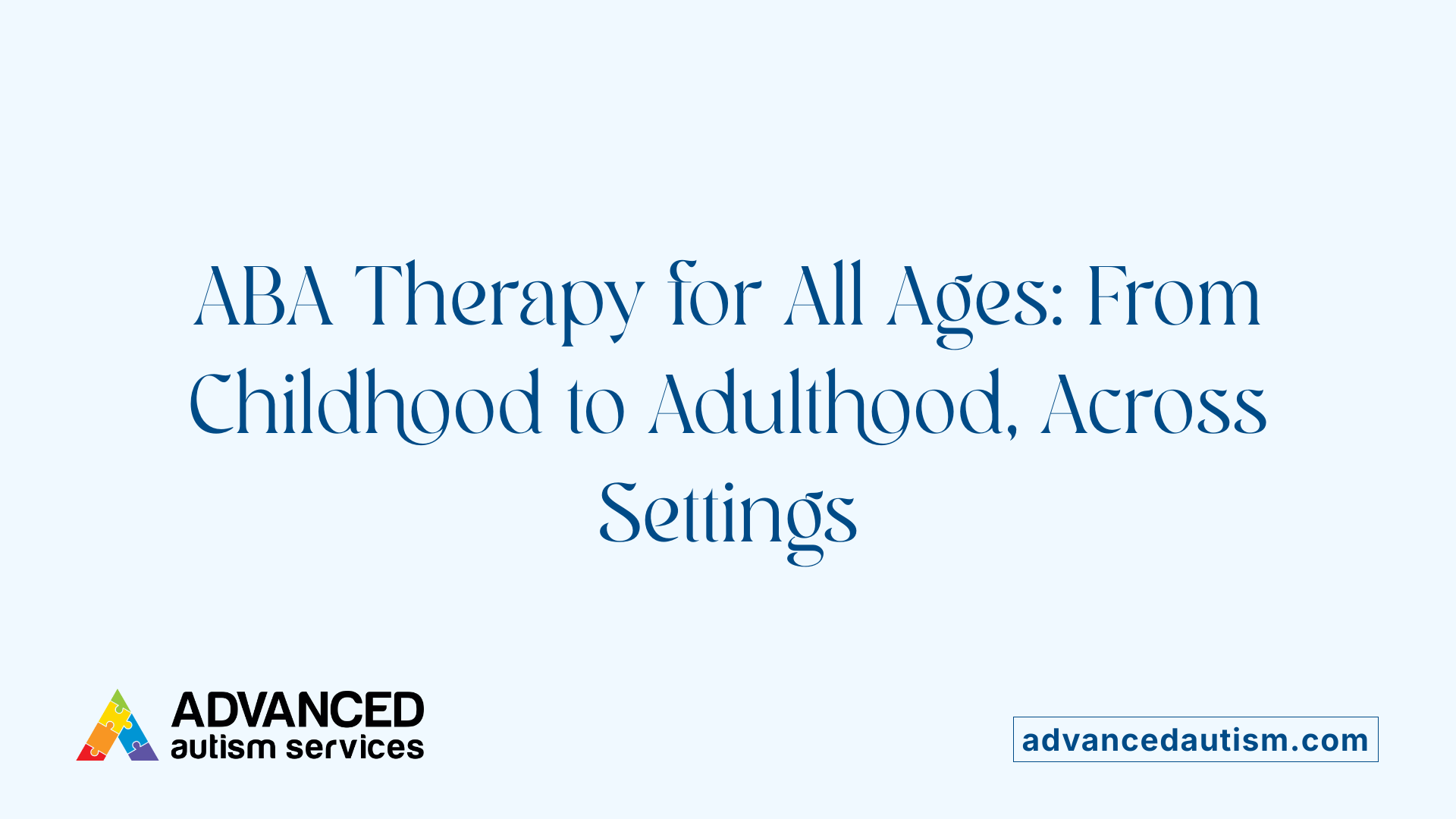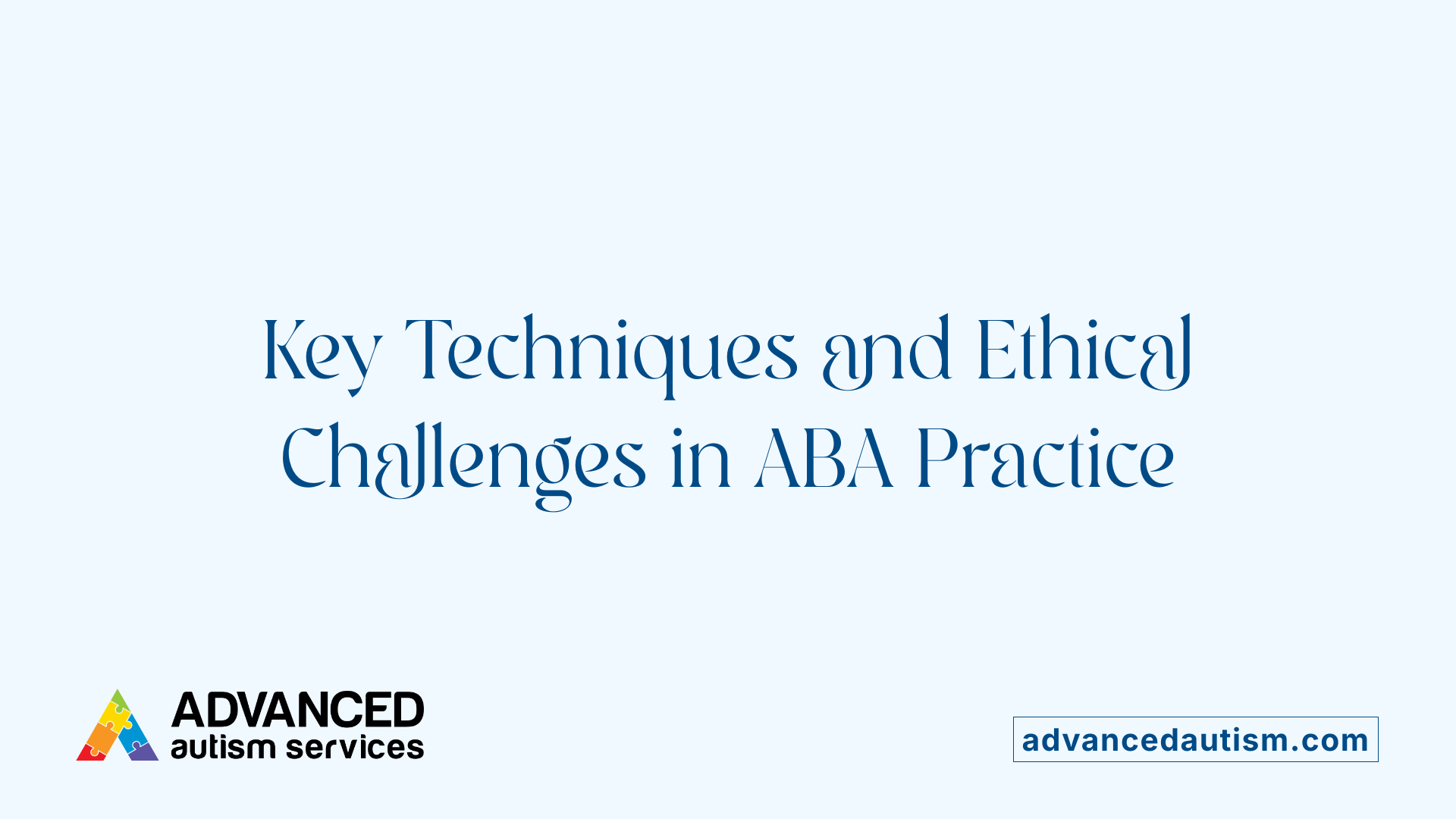Understanding ABA Therapy and Its Critical Role
Applied Behavior Analysis (ABA) is a scientifically supported approach that has revolutionized the treatment of autism spectrum disorder (ASD) and other developmental disabilities. It is grounded in learning principles, emphasizing behavior modification through reinforcement strategies. Since its development in the 1960s, ABA has provided a framework that helps individuals develop crucial skills, reduce harmful behaviors, and improve overall quality of life.
What is ABA Therapy and How Does It Work?

What is ABA therapy?
Applied Behavior Analysis (ABA) therapy is a research-backed method used to improve behaviors and skills in individuals with autism spectrum disorder (ASD) and other developmental disabilities. It is based on the science of learning and behavior, focusing on understanding how behaviors are influenced by the environment and how they can be changed through systematic techniques.
ABA therapy aims to teach helpful behaviors such as effective communication, social interaction, self-care, and academic skills. It also seeks to reduce problematic behaviors like aggression, self-harm, and tantrums. This therapy is tailored to each individual, often involving detailed assessments, setting specific goals, and tracking progress over time.
How does ABA work?
The core of ABA is the use of scientific principles of learning, primarily reinforcement—rewarding desired behaviors to encourage their recurrence. Therapists analyze the patterns of behavior using the A-B-Cs model: antecedents (what happens before a behavior), the behavior itself, and consequences (what happens after). By modifying antecedents and consequences, therapists can influence behavior effectively.
ABA treatments rely heavily on data collection. Every session involves tracking behaviors and responses to evaluate what strategies work best. This ongoing assessment helps personalize the intervention, ensuring that each individual’s unique needs are met.
Techniques used in ABA
Various techniques optimize the learning process. Common methods include:
- Positive Reinforcement: Reward for successful behavior to reinforce learning.
- Discrete Trial Training (DTT): Structured teaching method where skills are broken down into small, teachable units.
- Natural Environment Teaching (NET): Learning occurs in real-life settings to promote generalization of skills.
- Prompt Fading: Gradually reducing prompts to foster independence.
- Augmentative and Alternative Communication (AAC): Techniques and tools to support or replace speech.
ABA therapy is delivered by trained professionals, often a Board Certified Behavior Analyst (BCBA), who develops personalized treatment plans and supervises interventions. This approach allows for flexibility in methods and intensity depending on the individual’s age, needs, and progress.
Impact and Effectiveness
Research spanning decades shows that ABA can significantly improve cognitive, language, social, and behavioral outcomes. Studies demonstrate that early and consistent ABA interventions offer the best chance for children to achieve greater independence and integration into society.
Overall, ABA's systematic and scientific approach has made it the leading evidence-based treatment for individuals with autism, supporting them in gaining vital skills and reducing behaviors that may limit their quality of life.
The Effectiveness and Benefits of ABA Therapy in Developmental Disabilities

What are the benefits and effectiveness of ABA therapy for developmental disabilities?
Applied Behavior Analysis (ABA) therapy has proven to be highly effective in supporting individuals with developmental disabilities, especially autism spectrum disorder (ASD). It aims to enhance positive behaviors such as communication, social skills, and daily living activities, while reducing problematic behaviors like aggression or self-harm.
Decades of scientific research consistently demonstrate that intensive ABA treatment results in meaningful improvements. Studies report enhancements across various areas including cognition, language development, emotional regulation, and social interactions. In many cases, children who begin early receive tailored interventions that maximize their learning potential.
Endorsed by reputable organizations such as the CDC, NIH, and the US Surgeon General, ABA is recognized as an evidence-based treatment. Systematic reviews collectively support its effectiveness in achieving long-term positive outcomes. Key benefits include increased independence, better adaptive functioning, and improved quality of life.
Early intervention is especially vital. By starting ABA therapy during early childhood, when the brain exhibits higher plasticity, children can acquire essential skills more rapidly. This proactive approach not only promotes developmental growth but also helps in managing challenging behaviors early, preventing these issues from becoming ingrained. Overall, ABA remains the gold standard for addressing the needs of individuals with ASD and other developmental disabilities, offering hope for measurable and lasting improvements.
Application of ABA Across the Lifespan and Settings
 Applied Behavior Analysis (ABA) is a flexible treatment approach that benefits individuals of all ages, from young children to adults. Its effectiveness spans across various settings, including homes, schools, and community environments.
Applied Behavior Analysis (ABA) is a flexible treatment approach that benefits individuals of all ages, from young children to adults. Its effectiveness spans across various settings, including homes, schools, and community environments.
For children, especially those diagnosed with autism spectrum disorder (ASD) or developmental disabilities, ABA aims to build essential skills like communication, social interaction, and self-care. Intensive early intervention utilizing ABA techniques can significantly improve cognitive, language, and adaptive skills. This early work helps lay a strong foundation for later development.
Adolescents and adults also benefit from ABA strategies that focus on enhancing independence and reducing challenging behaviors. In these age groups, ABA can teach daily living skills, vocational behaviors, and social skills necessary for community participation.
Implementation of ABA in everyday environments involves collaboration with families, teachers, and community workers. Therapists may conduct sessions in the home, provide training to caregivers, or work directly within school settings to promote consistency and skill generalization.
| Age Group | Focus Areas | Settings | Example Strategies |
|---|---|---|---|
| Children (0-12) | Language, social skills, self-help, problem behavior | Home, clinics, preschool | Discrete Trial Training (DTT), natural environment teaching (NET), parent training |
| Adolescents (13-17) | Independence, social skills, vocational skills | Schools, community centers | Pivotal Response Treatment (PRT), community outings, self-management training |
| Adults (18+) | Employment, social functioning, reducing severe behaviors | Workplaces, residential homes | Functional communication training, behavioral supports, job coaching |
Does ABA therapy work for individuals with intellectual disabilities?
Absolutely. ABA is highly effective for individuals with intellectual disabilities, including those with autism spectrum disorder. Supported by decades of scientific research, ABA improves cognitive, language, social, and self-help skills regardless of intellectual ability. It employs simple reinforcement techniques and breaks down complex tasks into manageable steps, making it accessible for all individuals. The focus on rewarding correct behaviors and systematic skill teaching helps individuals across the lifespan, enhancing their independence and quality of life.
What role does ABA therapy play in early intervention strategies?
In early childhood, ABA is a cornerstone of intervention for children with developmental delays and ASD. It helps address delays during critical periods of brain development, leading to more meaningful and lasting improvements. Early ABA intervention involves structured techniques like positive reinforcement and data-based planning to teach communication, social, and self-care skills. It also helps reduce problematic behaviors and promote independence.
Family involvement is vital, with collaborative strategies ensuring skills are reinforced across settings. Tailoring ABA programs to each child's individual needs maximizes potential benefits, leading to better long-term outcomes and facilitating smoother transitions into school and community life.
Techniques, Challenges, and Ethical Considerations

What are some common techniques used in ABA therapy?
Common techniques used in ABA therapy include Discrete Trial Training (DTT), which involves structured teaching through prompts and reinforcement, and natural environment teaching, where learning occurs through real-life activities to promote generalization of skills. Behavior chaining breaks down complex tasks into smaller steps, facilitating learning of comprehensive behaviors. Reinforcement strategies such as positive reinforcement—rewarding desired behaviors with praise, toys, or activities—and extinction, which involves withholding reinforcement to decrease challenging behaviors, are fundamental to ABA. Visual aids like modeling, video modeling, and picture exchange systems support observational learning, especially for children with autism. Additional methods include prompting and fading, behavior contracts, redirection, and script fading, all tailored to individual needs to teach skills and manage behaviors effectively.
Are there any controversies or concerns associated with ABA therapy?
Controversies about ABA primarily relate to its historical use of aversive and punitive techniques, which are now largely outdated. Critics argue that, despite progress, ABA can sometimes be overly rigid or repetitive, focusing on making autistic individuals conform to neurotypical behaviors without regard for neurodiversity. Autistic self-advocates voice concerns that ABA may be coercive or traumatic, potentially leading to post-traumatic stress disorder (PTSD) or encouraging masking behaviors that harm mental health. Supporters emphasize that current practices prioritize positive reinforcement, individual tailoring, and skill-building. While scientific evidence supports ABA's effectiveness, ethical debates about respecting neurodiversity and avoiding coercion continue. Emphasizing consent, individual preferences, and minimizing stress are important considerations in modern ABA practice.
What is the difference between ABA therapy and developmental therapy?
ABA therapy is highly structured and evidence-based, focusing on specific behavior modification techniques like discrete trial training and natural environment training to improve social, communication, and daily living skills. It is often intensive and involves direct teaching, data collection, and parent involvement. Developmental therapy adopts a more holistic approach that supports a child's natural developmental progression through play, social interaction, and fostering developmental milestones. It is frequently implemented in group or classroom settings, emphasizing age-appropriate growth via play-based and relational strategies. In practice, many programs blend elements of ABA and developmental approaches to create personalized interventions suitable for each child's unique needs.
Are there any medications that treat core symptoms of ASD?
Currently, no medications directly target the core symptoms of autism spectrum disorder, such as social communication challenges or repetitive behaviors. Instead, medications are used to manage associated symptoms like anxiety, hyperactivity, seizures, or gastrointestinal issues. These medications are part of a comprehensive treatment plan alongside behavioral therapies like ABA, which aim to improve overall development and functioning.
Supporting Evidence and Ethical Standards in ABA Practice
Is ABA therapy supported by research and scientific evidence?
Applied Behavior Analysis (ABA) has been extensively studied and well-documented as an effective treatment for individuals with autism spectrum disorder (ASD) and other developmental disabilities. Over the past four decades, a large body of research—including more than 770 studies—has consistently shown positive outcomes in areas such as language development, social skills, cognitive growth, and adaptive behavior. Meta-analyses and systematic reviews indicate that intensive ABA interventions, especially when started early in life, can significantly improve functioning.
Scientific validation of ABA is strong enough that it has been recognized as a gold-standard, evidence-based approach by organizations such as the US Surgeon General, the American Psychological Association, and the National Institute of Mental Health. These endorsements are based on rigorous research demonstrating that ABA can reduce problem behaviors and foster skill acquisition. Despite some limitations in research designs, the overall consensus affirms that ABA is a scientifically validated method for supporting individuals with autism.
Are there any controversies or concerns associated with ABA therapy?
While ABA’s scientific benefits are well-supported, some controversies exist surrounding its practice. Historically, early ABA programs sometimes relied on aversive techniques and punitive measures, which have been abandoned in modern protocols. Critics now raise concerns about overly rigid or repetitive approaches that may attempt to normalize behaviors at the expense of accepting neurodiversity.
Autistic self-advocates highlight that ABA can sometimes lead to coercive experiences, masking, or trauma, which may harm mental health. Many argue that an overemphasis on conformity can undermine individual authenticity and promote masking strategies that are mentally taxing.
Supporters of ABA stress that current best practices prioritize positive reinforcement, individualized programming, and ethical considerations. The ongoing debate emphasizes the importance of ongoing ethical reflection, respecting neurodiverse identities, and ensuring interventions promote quality of life without coercion.
Overall, while ABA’s effectiveness in improving skills is well-established, ethical concerns urge practitioners to deliver personalized, respectful, and non-coercive services. Adherence to ethical standards and continuous professional training are essential to maintain the integrity of ABA practice.
The Future of ABA in Developmental Disability Support
As research continues to affirm the effectiveness of ABA therapy, and as practitioners emphasize respectful, individualized, and ethical approaches, ABA remains a cornerstone in the treatment of autism and other developmental disabilities. Its versatility across age groups and settings makes it a vital tool for fostering independence, improving life skills, and enhancing overall wellbeing. Ongoing dialogue about best practices aims to optimize outcomes while respecting neurodiversity, ensuring ABA’s role remains both scientifically robust and ethically sound for generations to come.
References
- Behavioral Treatment of Autism and Other Developmental ... - BACB
- Applied Behavior Analysis (ABA) | Autism Speaks
- Applied Behavior Analysis (ABA) - Developmental Disabilities Institute
- Behavior Analysis Services - Disability Rights Florida
- [PDF] Behavioral Treatment of Autism and Other Developmental Disabilities
- Applied Behavior Analysis
- Applied Behavior Analysis in Children and Youth with Autism ...
- Applied Behavior Analysis (ABA) - Cleveland Clinic
- Treatment and Intervention for Autism Spectrum Disorder - CDC



